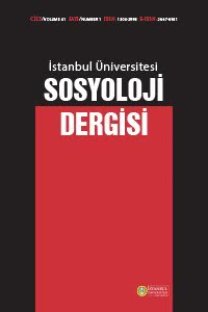Fasti'nin açtığı pencereden Roma takvimine bakış
Günümüzde neredeyse tüm dünyada geçerliliği olan Gregorius takvimi, Roma takviminin kısmen değişmiş bir biçimidir. Kökleri Cumhuriyet öncesi döneme kadar giden Roma takviminde ise en önemli reform Iulius Caesar zamanında olmuştur. Roma tarihine gönderme yapan uğurlu ve uğursuz günleri, dinsel günleri, bayramları ve meclis günleri her dönemde oldukça renkli olan Roma takvimi, toplumsal yaşamı düzenleyen önemli bir araç olmasının yanı sıra, birçok antik yazar için merak ve esin kaynağı da olmuştur. Dolayısıyla Roma takvimini yalnızca işlevsel bir zaman tablosu olarak değil mitoloji, din ve tarihin iç içe geçtiği bir semboller ağı olarak düşünmek gerekir. Bu makalede, Ovidiusun (MÖ 43 - MS 17~18) Fasti eseri bağlamında, takvimin Roma şiirindeki özgün bir görüntüsü değerlendirilecektir.
A look at Roman calendar through Fasti s window
The Gregorian calendar, which is widely adopted in the world today, is a partially modified version of the ancient Roman calendar. The ancient Roman calendar itself, which has it roots in the pre-Republican era, underwent the most definite change in the age of Julius Caesar. Besides being an important medium for the organization of social life, the Roman calendar, with its religious days, festivals, assembly days, auspicious and ominous days, was a source of curiosity and inspiration for the ancient authors. Hence, we have to think of it not just as a practical time table but also as a web of symbols woven with mythology, religion and history. In this article an original reflection of the calendar in Roman poetry will be assessed within the context of Fasti by Ovid (43 BC - 17~18 AD).
___
- Benveniste, E. (1969). Le vocabulaire des institutions indo-européennes 2: pouvoir, droit, religion. Paris: Les Éditions de Minuit
- Blackburn, B. ve Holford-Strevers, L. (1999). The Oxford companion to the year. New York: Oxford University
- Degrassi, A. (Ed.). (1963). Inscriptiones Italiae, vol. XIII, Fasti et elogia, fasc. II, Fasti anni Numani et Iuliani. Rome: Libreria dello Stato
- Dürüşken, Ç. (2000). Romada takvim. Cogito (Takvim= Zamanın Haritası), 22: 101-111
- Ernout, A. ve Meillet, A. (1951). Dictionnaire etymologique de la langue Latine. Histoire des mots. Paris: Librairie C. Klincksieck
- Feeney, D. (2007). Caesars calendar: Ancient time and the beginnings of history. Berkeley: University of California
- Fiske, G. C. (1902). The politics of the Patrician Claudii. Harvard Studies in Classical Philology, 13: 1-59
- Fowler, W. W. (1899). The Roman festivals of the period of the Republic. Londra: Macmillan
- Frazer, J. G. (1929). Publii Ovidii Nasonis Fastorum Libri Sex, Indices, Illustrations, Plans. Vol. II. Londra: Macmillan
- Frazer, J. G. ve Goold, G. P. (Ed.) (2003). Ovid: Fasti (LOEB). Cambridge ve Londra: Harvard University
- Grafton, A. T. ve Swerdlow, N. M. (1988). Calendar dates and ominous days in Ancient Historiography. Journal of the Warburg and Courtauld Institutes, 51: 14-42
- Green, S. J. (2004). Ovid Fasti 1: A commentary. Leiden: Brill. Herbert-Brown, G. (Ed.) (2002). Ovids Fasti: Historical readings at its Bimillennium. New York: Oxford University
- Kent, R. G. (Ed.). (1938). Varro. On the Latin language. Vol. I. Cambridge: Harvard University
- Michels, A. K. (1967). The calendar of the Roman Republic. Princeton: Princeton University
- Neatby, T. M. ve Plaistowe, F. G. (Ed.). (1893). Ovid: Fasti, Books III. ve IV. Londra: W. B. Clive & Co.
- Pasco-Pranger, M. (2006). Founding the year: Ovids Fasti and the poetics of the Roman Calendar. Leiden ve Boston: Brill.
- Platner, S. B. (1929). A topographical dictionary of Ancient Rome, Londra: Oxford University
- Porte, D. (1995). Le prêtre à Rome. Paris: Payot
- Robinson, M. (2007). Ovid, the Fasti and the Stars. Bulletin of the Institute of Classical Studies, 50 (1): 129-159.
- Rüpke, J. (2011a). Fasti. Brills New Pauly. Hubert Cancik ve Helmuth Schneider (Ed.), 13 Aralık 2011, http://www.brillonline.nl/subscriber/entry?entry=bnp_e410140
- Rüpke, J. (2011b). Feriale. Brills New Pauly. Hubert Cancik ve Helmuth Schneider (Ed.), 17 Aralık 2011, http://www.brillonline.nl/subscriber/entry?entry=bnp_e410860
- Rüpke, J. (2011c). Roman Calendar from Numa to Constantine: Time, History, and the Fasti. D. M. B. Richardson (Çev.). Hoboken: Wiley-Blackwell
- Rüpke, J. ve Freydank H. (2011). Calendar. Brills New Pauly. Hubert Cancik ve Helmuth Schneider (Ed.), 17 Aralık 2011, http://www.brillonline.nl/subscriber/entry?entry=bnp_e605690
- Saglio, E. (Ed.) (1896) Le Dictionnaire des Antiquités Grecques et Romaines. C. Daremberg ve E. Saglio (Vols. Tome 2 - Vol. 2). Paris: Librairie Hachette
- Salzman, M. R. (1990). On Roman Time: The Codex-Calendar of 354 and the Rhythms of Urban Life in Late Antiquity. Berkeley: University of California
- Scullard, H. H. (1981). Festivals and Ceremonies of the Roman Republic. Londra: Thames and Hudson.
- Vaan, M. de (2008). Etymological Dictionary of Latin and the other Italic Languages, Leiden: Brill
- ISSN: 1304-2998
- Başlangıç: 2020
- Yayıncı: İstanbul Üniv. Edebiyat Fak. Sosyoloji Böl.
